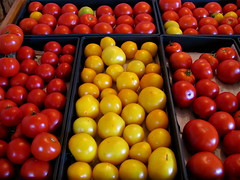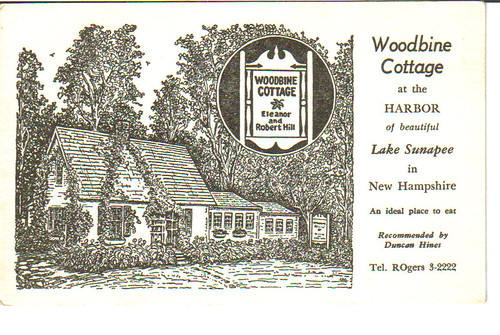
An old window in an abandoned home place
This week we've been in Kentucky where we've just bought a second piece of land within a mile of the first over on another ridge top. The 45 acre field is on the rise of a hill and currently in soybeans and just below on about thirty acres is a very decent modular home, about 7 years old. Miss Lillie bought 100 acres about ten years ago and put in her home on the end of a small driveway below the field. She parceled off a few small pieces to family members who have since sold and now she wants to move because her health is failing. In her day she was quite a gardener and I was delighted to find some evidence of one including a giant red hibiscus and some trumpet vine, a plant I hadn't seen since my mother used to grown it on our fence in Akron. [Here it seems to grow wild on the roadsides.]

I hinted to Miss Lillie that I am quite partial to gnomes and other fauna (I hope a few might stay on here)
Scattered around were also some gnomes--including Snow White and five dwarves--and other garden trappings and a trickle of a creek from a small pond, both of which have suffered in the summer drought. Despite the dry grass and dust-like effect of the landscape, I could see the grounds had once been quite park-like in recent years.

Butterflies were everywhere
A small allée of eight pair of Rose of Sharon line the driveway and along the circle by the house are ornamental trees, several arbors and an area for a vegetable patch (in full sun--it is great squash, tomato and watermelon-growing weather down here and they can plant as early as late March and harvest mostly in August so their gardens are largely done now).

A storm cellar would make a good root cellar
I also knew the place would be a good fit when I saw she had added a storm shelter on the east side of the house. Miss Lillie is Ohio born and raised and, like me, always has had a fear and fascination with twisters. Our part of Kentucky is not immune to tornadoes but it is hilly enough to not breed large ones, as does the flatter land in the western side of the state.
Ironically, right before our visit in April, this part of the county saw the first tornado since the super outbreak of April 3, 1974 (the 33rd anniversary, in fact). It did sporadic but significant damage. While Xenia, Ohio's tornado received the most publicity that night, Kentucky in fact had some equally significant tornadoes. [For weather freaks like myself check out: www.April31974.com]
I remember April 3, 1974 well because my mother had just bought a family tent that we'd pitched in our backyard in Akron. A neighbor called and said, "Don't you know we're having a tornado watch?" This was certainly not an uncommon occurrence but we didn't want to risk a night in the tent, so we camped in the basement instead. That was an exciting time with the dog, my brothers, my Mom and the transistor radio. The next morning we awoke to the news about Xenia's devastation.

Our neighbors' silo and barn was blown down by a tornado that hopped along the ridge, on the 33rd anniversary of the Super Outbreak
This is the first non-family related house that my husband and I will have together. There is a liberation in this and a giddy expectancy about homeownership as well as feathering my own nest without a history to it. We have both always lived in older, historic homes so the prospect of living in a 7-year old modular home is a bit, well, exciting. It is clean, has four bedrooms (five if I don't snag a smaller one for a home office), a large kitchen, dining area, two living areas, and three full bathrooms. There are many closets--large and small--and even a closet pantry. Two porches--one in front and one in back--and a mudroom with laundry area (something I've always wanted). Lots of ceiling fans and central air. Maytag appliances. A garden shed, a tool shop, and a large red barn for animals or storage. [I know, this is starting to sound like a real estate listing!]

Hazel's store is a popular stop a few miles up the road
This will be a place to come to when we can and eventually a transitional home when we decide where to build a farmhouse. My husband first wants to build up his cattle business and we need to sell our home in New Hampshire before we can completely make the transition. But this is the ideal solution and we can walk to our other fields and pasture within an easy mile down over the ridge and into the hollow. We won't be able to occupy the house until October, when we plan to make another trip with some stuff and then will be back and forth whenever we can get here.
We visited the local library today and got library cards and somehow that felt like the beginnings of a move. It is quite small and in a modern plaza, very different from our well-designed New England town libraries back in New Hampshire. But everything seems to be done by the county down here so the library card is good at any county library. Our boys enjoyed getting their own cards, too, and I was glad to see they had two computers for if I'll need to rely on internet access (I understand DSL has not reached our area yet and I'm not sure I could suffer through dial-up again!).

Small churches seem to be on every ridge or country crossroads
We also spent some time getting to better know the geography (this must be our sixth visit in 18 months and each time it seems clearer), meeting other neighbors here and there, and a lot of time at the neighboring farm. Our boys helped Frankie round up the cows at milking time, fed the calves, watched as he took a corn chopper apart and repaired it. Last night as we sat on our neighbor's porch in the hot late August sun, we watched as a large thunderstorm cell drifted northwesterly (an odd occurrence) and settle over the ridge. The rain dropped slowly at first and then came down in buckets. As we ran to the car, enjoying the cool soaking, I hollered back to Margaret, "You see, I told you we'd bring the rain!"
On our drive back to the hotel it hardly rained a bit but the sky remained black and flashing to the north over our ridge. And we heard today that it rained there most of the night. Margaret said it was their first rain in 44 days. It had been so hot and dry that even the locals were complaining about the heat--I found it surprisingly tolerable and was glad I experienced what they felt had been the worst heat in decades.
There is an awareness of weather here unlike we have at home where the skies are hemmed in by trees and the only way to experience a wide open space is to be on a mountain top or in a river valley. Here in the knobs most people seem to build on the more open pastured ridges but there are still pockets in the hollows where people farm and live, too. It seems that our neighbors take their environment for granted only because it is such a part of their fabric. The land is a backdrop as much as it is a main character in a resonant history of this special place which we're starting to, tentatively, feel might be a good home.
"Let us live here."
























